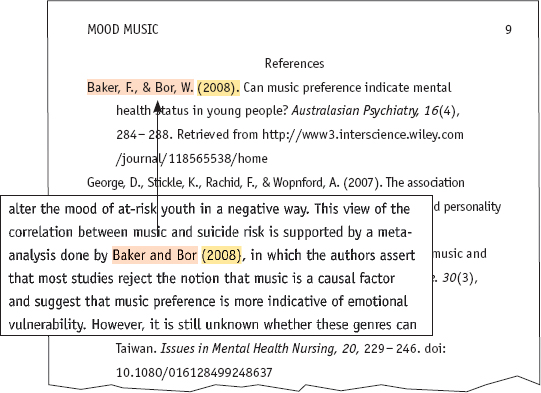Understanding the basics of APA style
Page contents:
Why does academic work call for very careful citation practices when writing for the general public may not? The answer is that readers of academic work expect source citations for several reasons:
- Source citations demonstrate that you’ve done your homework on your topic and that you are a part of the conversation surrounding it.
- Source citations show that you understand the need to give credit when you make use of someone else’s intellectual property. (See more about acknowledging sources.)
- Source citations give explicit directions to guide readers who want to look for themselves at the works you’re using.
The guidelines for APA style tell you exactly what information to include in your citation and how to format that information.
Types of sources
Look at the Directory to APA-style references for guidelines on citing various types of sources—
Print and digital sources
If your source has printed pages—
If you access the digital version of a magazine or newspaper article, or if you read a book on an e-
Articles from web and database sources
You need a subscription to look through most databases, so individual researchers almost always gain access to articles in databases through the computer system of a school or public library that pays to subscribe. The easiest way to tell whether a source comes from a database, then, is that its information is not generally available for free. Many databases are digital collections of articles that originally appeared in edited print periodicals, ensuring that an authority has vouched for the accuracy of the information. Such sources often have more credibility than free material available on the web.
Parts of citations

APA citations appear in two parts of your text—
In the text of her research essay Tawnya Redding includes a paraphrase of material from an online journal that she had accessed through the publisher’s website. She cites the authors’ names and the year of publication in a parenthetical reference, pointing readers to the entry for “Baker, F., & Bor, W. (2008)” in her references list.
Content notes
APA style allows you to use content notes, either at the bottom of the page or on a separate page at the end of the text, to expand or supplement your text. Indicate such notes in the text by superscript numerals (1). Double-
SUPERSCRIPT NUMBER IN TEXT
The age of the children involved in the study was an important factor in the selection of items for the questionnaire.1
FOOTNOTE
1Marjorie Youngston Forman and William Cole of the Child Study Team provided great assistance in identifying appropriate items for the questionnaire.